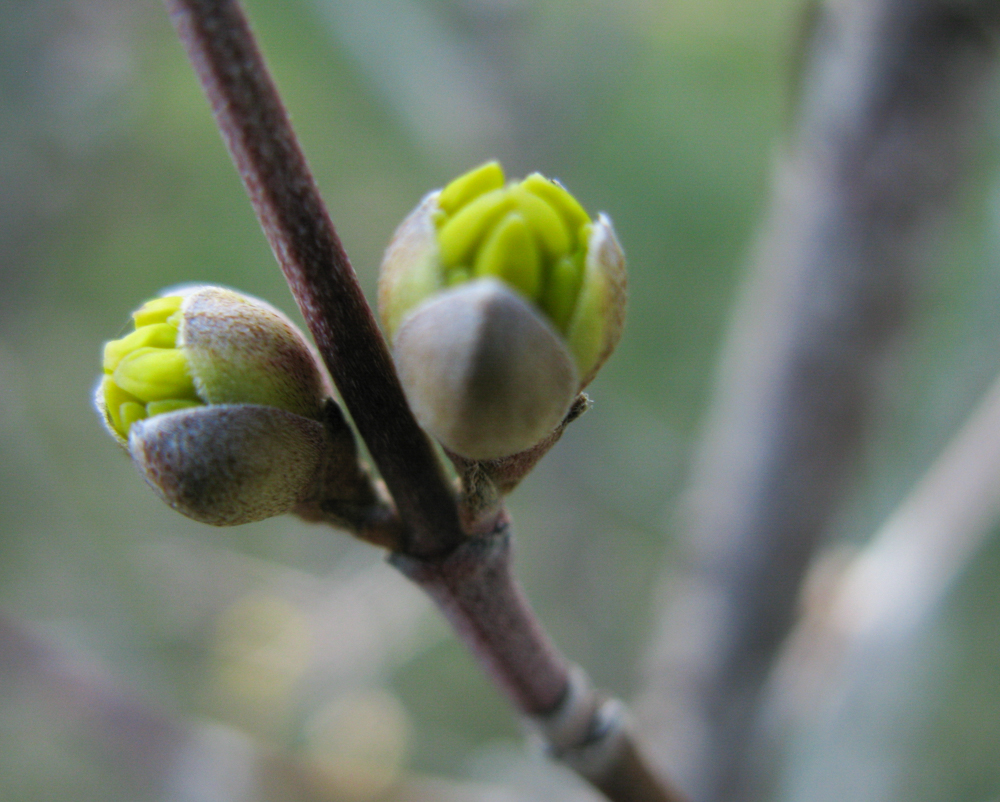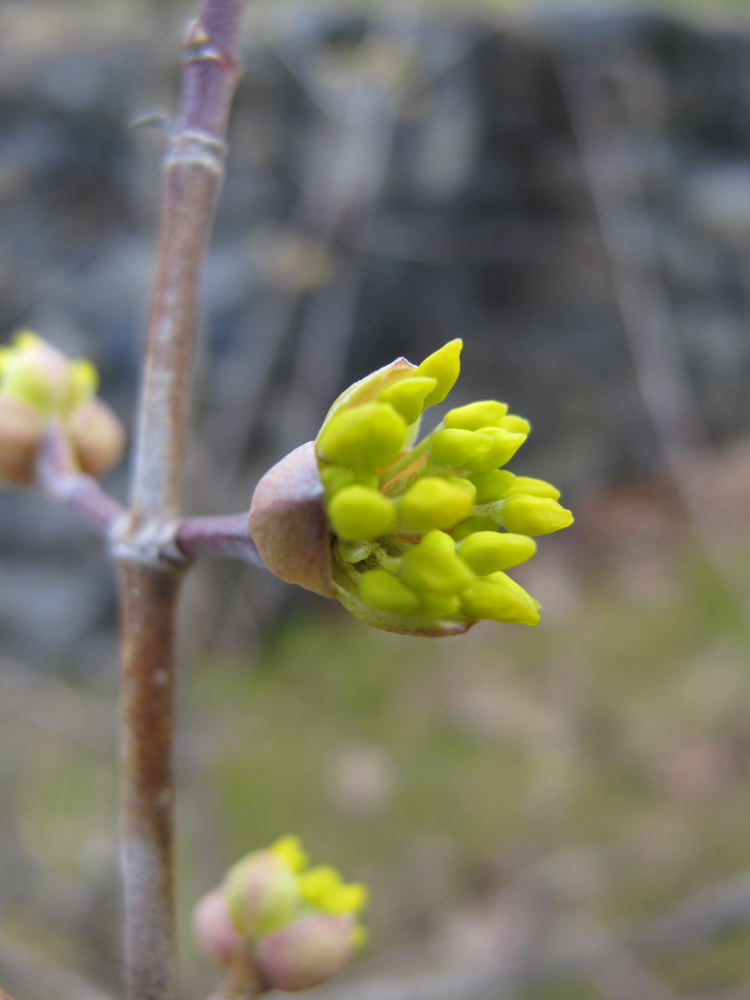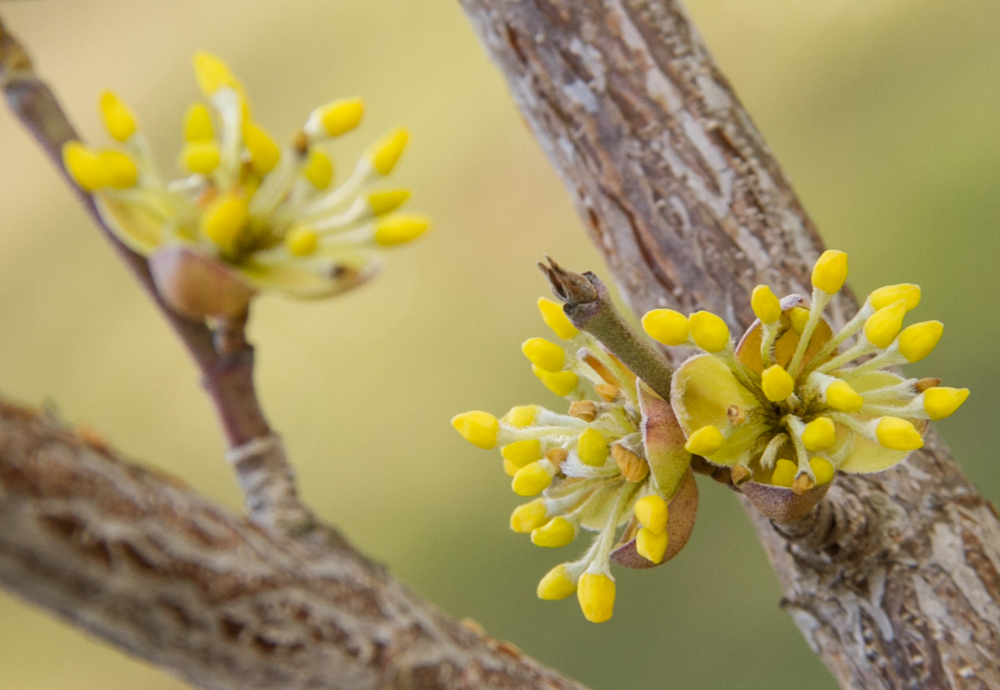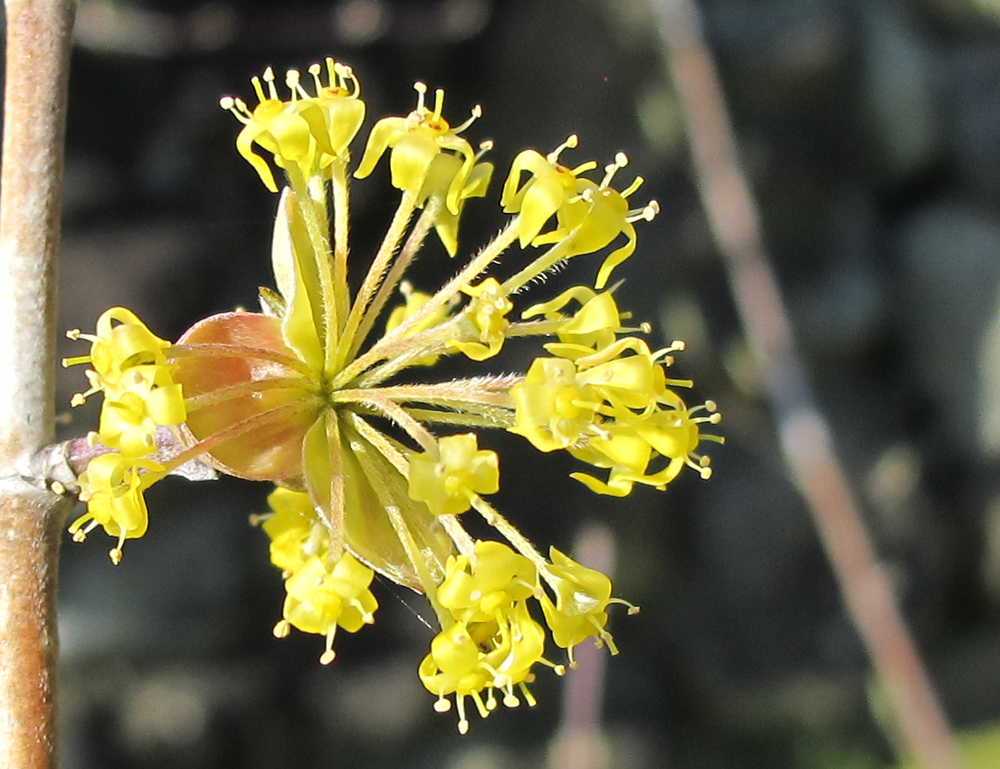Not much is blooming in my garden now. The snowdrops are almost gone, the grape hyacinths are just beginning to open and the pulmonaria by the front door are slowly showing their spots. There is a star in the garden, though, although that star isn’t a show-off.
My bashful star is Cornus mas, a shrub that is little known and easily overlooked.
Cornus mas, or Cornelian cherry, is a large shrub or small tree that is hardy to zone 4. It doesn’t push itself in your face like forsythia; rather, from a distance it sends out a golden glow that at this time of year warms the soul and draws the eye as quickly as Roger Moore drew his golden gun. (If you remember the film, you’ll know that the golden gun didn’t belong to James Bond but to the villain. Still, the metaphor came so easily that I had to use it.)

Cornelian cherries are not photogenic. This picture isn’t very good and it’s the best I have.
Cornus mas is a slow-growing deciduous shrub or small tree. I planted the one you see in the photo above in 2005 and in eleven years, it has barely doubled in size. The branches are upright and the short trunk needs to be pruned up if you want to show off the exfoliating bark which, on my specimen, is nothing to write home about. (Will it become better with age? I hope so.)
The leaves aren’t much to write home about either. They are dark green and slightly glossy in summer; occasionally they will colour in autumn but overall they are so uninteresting that I can’t find a single photo that shows them in any season.
So why do I like this shrub?
For one thing, it is pest-free — and that’s a big plus in an organic garden. It isn’t particular, growing well in sun or part shade. It isn’t fussy about the soil either, although I’m sure that a fertile soil and a modicum of water will help it grow faster. Most of all, it doesn’t need coddling. In fact, the only thing I can remember doing to mine is pruning out dead wood, a pleasant task whenever the sun is shining.
Still, the main reason I like my Cornelian cherry is the act it puts on at this time of year. It is my surrogate swimmer, cautiously putting a toe in the water, then pulling it back. It is my thermometer, gauging my level of optimism, telling me whether spring is here or not.
On the first warm days the shrub remains bare. It’s smart — it knows that one swallow does not make a spring. But after a few more days, tiny buds appear at the end of short twiggy side shoots.

The buds are showing the tiniest bit of yellow-gold.
And then the Cornus mas loses its caution. With every warmish day, the fuzzy buds crack open a little more to reveal the flower that will be.

Don’t you want to touch that fuzzy sepal covering? I know I do.
Cautiously the flowers emerge.

The flowers-to-be reach out for the sun as if they are shrugging off a winter overcoat.
Borne in small umbels, or flower stalks that spread from a common point, the flowers are small and dainty. They appear on bare branches, which is a good thing considering how easily leaves would overwhelm them.

The bark looks quite attractive in this photo, a mix of grey and tan that sets off the yellow blossoms very nicely.
Even fully open, the flower clusters don’t shout the way forsythia does. Yet their yellow petals, bending backwards to expose hairy stems topped with white anthers, appeal to me much more.

The fruit is said to resemble coffee berries. It is edible and when ripe, is a dark ruby red or bright yellow. I can’t say which — my tree has never produced fruit of any colour.
Does Cornus mas grow in your garden? Does it produce fruit? And do you use that fruit, as the people in Armenia and Azerbaijan do, to make vodka?
If so, please invite me over for a drink.






I will drink to that …..shaken not stirred!
The Cornus mas at my old house was very slow growing, too. There was a whole row of them lining the parking lot at my mom’s (former) apartment complex that were bigger. I didn’t think the complex was that old, which made me wonder if they planted more mature specimens or perhaps there are faster growing varieties. I wonder if you need more than one to get fruit, because mine never had fruit either. Cornell University has a really huge one.
There are quite a few Cornus mas at the Chicago Botanic Garden. I have never seen fruit on them, though. It’s not a shrub we have at home, though I’d be interested. I’m told it works well as a clipped hedge.
I can’t imagine it as a clipped hedge, at least not mine. It’s form is too sparse and open. The best one I’ve ever seen was in Boston — an old tree that had a terrific Japanese-type shape. I’d be interested to see photos of it used as a hedge.